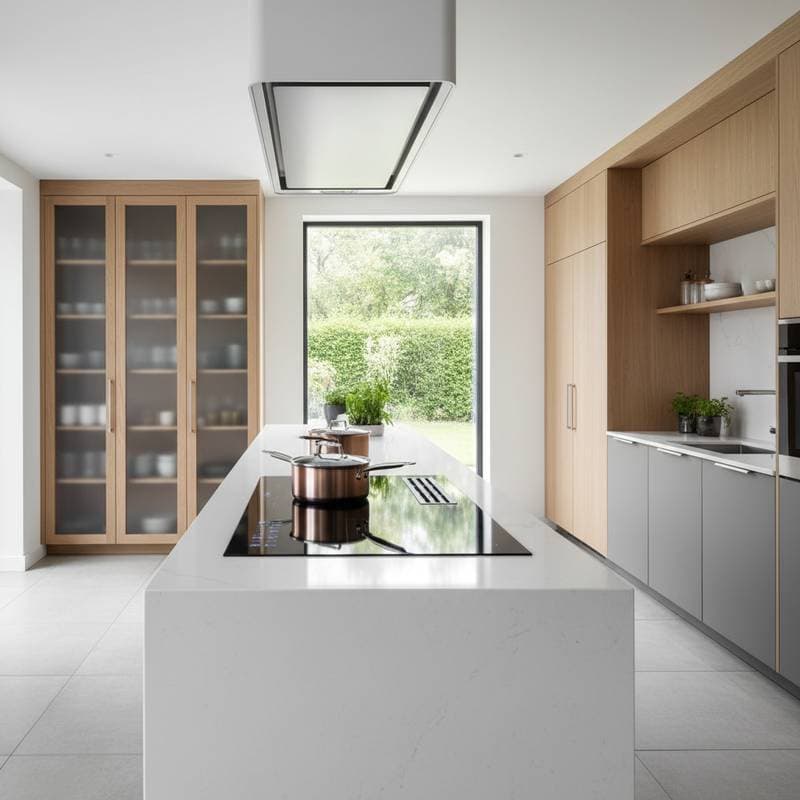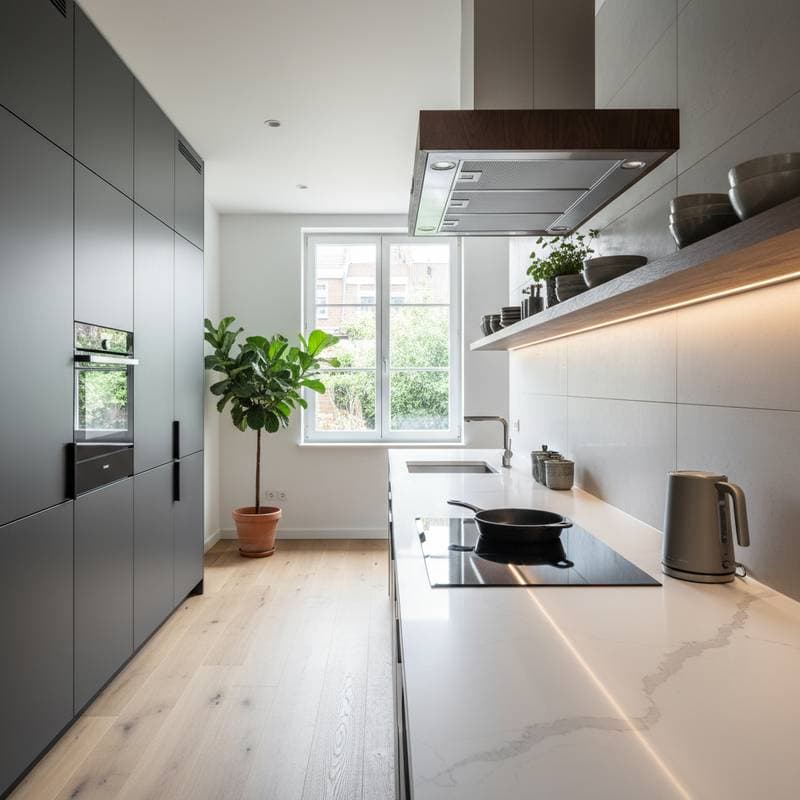Induction Zones: Transitioning from Gas Stoves in 2025 Kitchens
As a remodeling contractor, I have observed numerous kitchen trends emerge and fade. Granite countertops, farmhouse sinks, and smart appliances each enjoyed periods of prominence. However, the move from gas to induction cooking represents a fundamental evolution in considerations of performance, safety, and energy efficiency. This change accelerates rapidly, and individuals planning kitchen renovations this year must grasp its implications prior to selecting appliances or modifying wiring.
Reasons Gas Stoves Are Declining
Gas stoves have served as the preferred choice for dedicated home cooks for many years. The visible flame provides a perception of command and immediate responsiveness. Nevertheless, worries regarding indoor air quality, safety hazards, and energy consumption prompt numerous municipalities and builders to eliminate gas lines in new constructions. Beyond regulatory pressures, technological progress now enables induction to exceed gas performance across multiple critical areas.
In residences where I have worked, gas leaks or carbon monoxide problems have generated genuine safety risks. Such incidents occur more frequently than many acknowledge. Even minor leaks or inadequately vented ranges can compromise household air quality. For households with young children or members suffering from respiratory conditions, this hazard alone warrants consideration of induction.
The Mechanics of Induction Cooking
Induction cooking employs electromagnetic fields to heat pots and pans directly, bypassing the cooktop surface. This method yields quicker heating, superior temperature regulation, and reduced energy waste. The cooktop surface remains comparatively cool, preventing spills from adhering and simplifying maintenance.
Practically speaking, an induction cooktop boils water more rapidly than a gas counterpart and maintains a gentle simmer with greater accuracy. The surface adjusts instantaneously to temperature changes, eliminating open flames or lingering heat that often renders kitchens overly warm.
Essential Benefits for Homeowners
-
Efficiency
Induction directs energy straight to the cookware, minimizing heat dissipation and decreasing utility expenses. On renovation sites emphasizing sustainability, I frequently advocate for induction due to its lower overall electricity usage relative to gas systems, including ventilation demands. -
Safety
Absence of open flames and rapid surface cooling after pan removal enhance security. I have witnessed young children touch a recently used induction burner and withdraw without injury, as the glass surface proved merely warm rather than dangerously hot. This distinction proves vital for family settings. -
Air Quality
Research indicates that gas stoves emit nitrogen dioxide and additional pollutants impacting indoor environments. Induction removes this emission source completely. Reduced contaminants alleviate burdens on heating, ventilation, and air conditioning systems while fostering healthier living spaces. -
Ease of Cleaning
Induction surfaces feature flat, smooth designs unlike gas grates that accumulate grease and particles. Typically, a moist cloth suffices for cleaning. In renovations for active families, this practicality frequently influences the final choice. -
Design Flexibility
Induction components include modular zones configurable for innovative arrangements. Multiple compact units can form bespoke layouts or embed into island counters. Such adaptability grants greater design liberty than conventional gas setups provide.
Overlooked Aspects in the Switch to Induction
Transitioning to induction extends beyond mere appliance replacement. Electrical and compatibility factors demand attention. Induction cooktops necessitate dedicated circuits with adequate amperage. If the home electrical panel dates back, an upgrade becomes essential prior to installation. I have encountered clients purchasing costly units only to discover insufficient wiring capacity.
Cookware compatibility represents another frequent omission. Induction functions solely with magnetic materials, such as cast iron or select stainless steels. Test by affixing a magnet to the pan base; adhesion confirms suitability. Non-compatible items require replacement, an expense that may catch homeowners off guard during a straightforward swap.
Insights from a Contractor
From an installation viewpoint, induction streamlines certain processes. Eliminating gas lines reduces wall penetrations and utility company interactions, conserving labor and averting delays. Precise electrical planning remains crucial from the initial design stage. When clients consult me during layout planning, I ensure appropriate outlets, breakers, and ventilation accommodate advanced induction setups.
Induction cooktops still demand tailored ventilation. Although they generate minimal ambient heat, steam and cooking vapors persist. An appropriately dimensioned range hood stays necessary, yet it can prove smaller and less noisy than gas equivalents.
Dispelling Prevalent Myths
Numerous homeowners maintain that gas offers superior control. This held validity previously, but contemporary induction models provide exceptionally precise temperature variations. Professional chefs increasingly adopt induction for its reliability. Another falsehood involves induction producing significant humming or buzzing noises. In application, sounds remain negligible and typically relate to cookware selection rather than the unit itself.
Concerns about power outages during blackouts are valid. In regions prone to interruptions, evaluate backup generators or battery storage. Recognize that all-electric kitchens align with broader movements toward energy autonomy via solar panels and storage systems.
Economic Considerations
Induction cooktops carry higher initial costs than entry-level gas options, though gaps narrow. Energy conservation, diminished upkeep, and elevated safety recoup investments gradually. Regarding property value, prospective buyers view induction as a desirable upgrade. Real estate professionals report that refreshed all-electric kitchens command premium bids in lively markets.
Steps to Implement the Change
For upcoming remodels, engage your contractor at the outset. Review electrical capacity, ventilation strategies, and appliance manufacturers before purchases. Request a comprehensive cost analysis encompassing possible panel enhancements. Assess existing cookware and allocate funds for necessary substitutions.
Selecting induction transcends trend adherence. It constitutes a pragmatic advancement for safer, purer, and more effective cooking. As a contractor experienced with advantages and challenges directly, I affirm this evolution as one of the most significant enhancements in current kitchen architecture.









